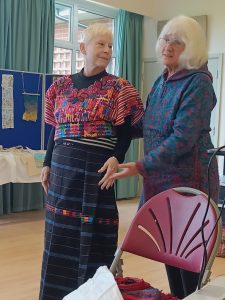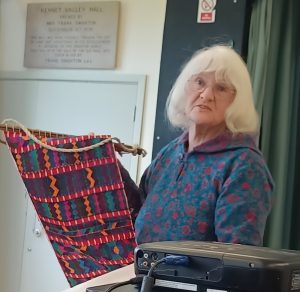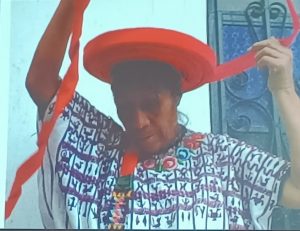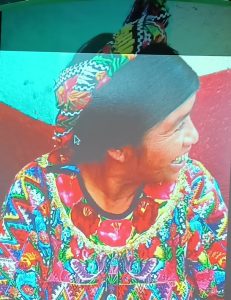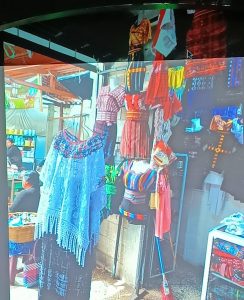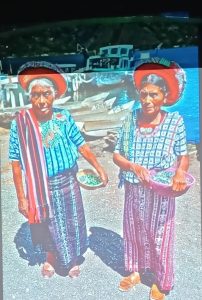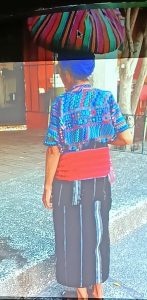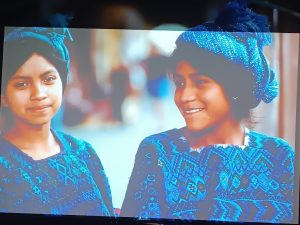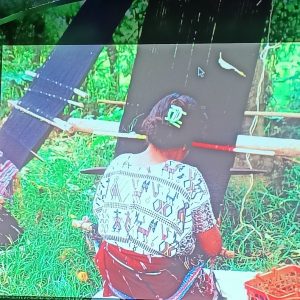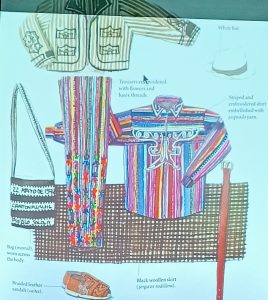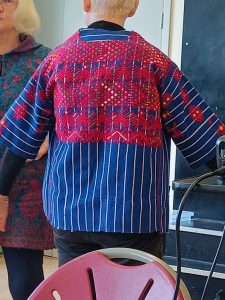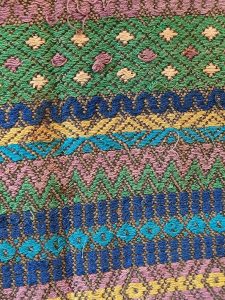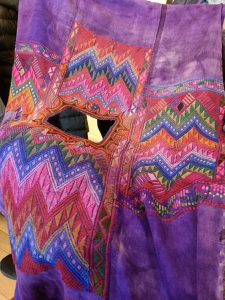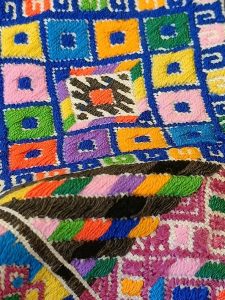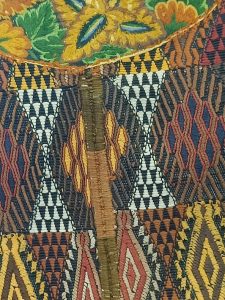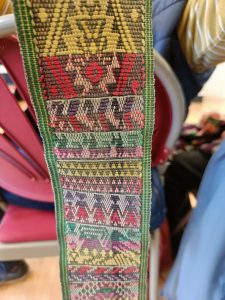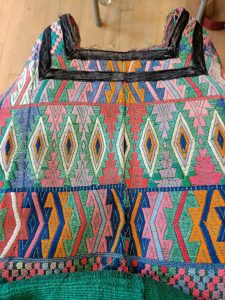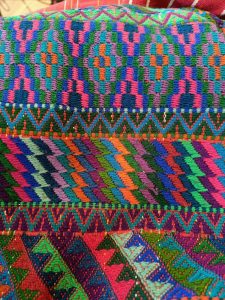Jill Salmons – Colourful Costumes and Cultures of Central America
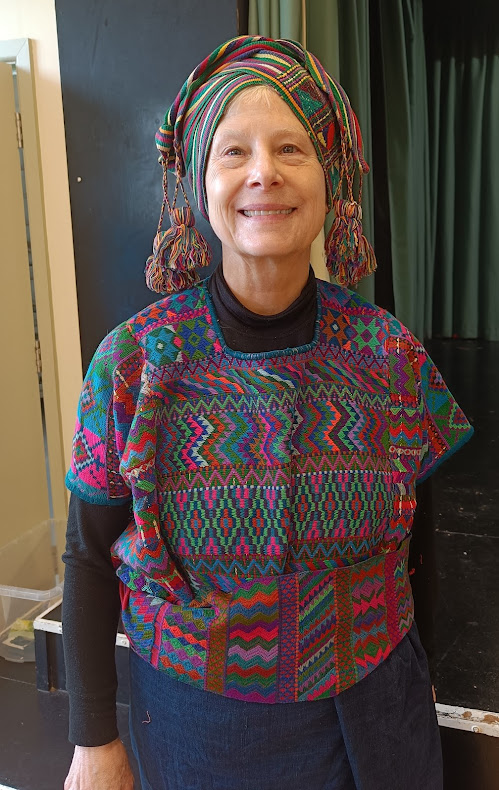
Jill Salmons and her friend, Jenny arrived with the most wonderful patchwork bag crammed with exciting colourful costumes which she had collected from Central and South America over the years.
Jill started her talk by reminding us of the history of the Mayan people in Mexico and Guatemala. She had visited the area 40 years ago and more recently to study textiles, weaving and embroidery. Cotton had been grown in the area for 1000’s of years and Jill mentioned the various dyes they had used including cochineal, vegetable dyes, a blue from sea shells and of course, indigo. It is the women who are the weavers but men are also involved with crocheting, making up the garments and selling items in the markets.
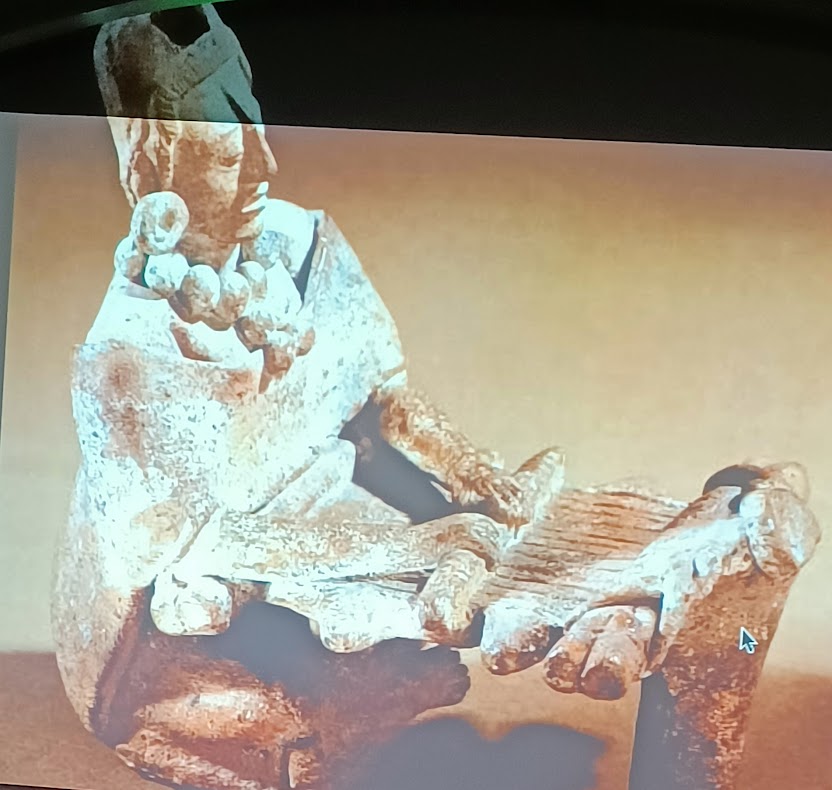
In her presentation, Jill showed us an image of an old Mayan ceramic statue of someone weaving, supporting the fact that the skill has been going on for generations. There was also a video of a lady using a backstrap loom and Jill made us laugh when she explained the language difficulty she had when trying to purchase a complete loom rather than just the cloth. Children as young as 5-6 would be introduced to the skill of weaving and the cloth is now made into garments for the tourists as well as for their own use.
After her presentation Jill handed round a wonderful selection of tops, skirts and bands for us to look at. She explained that the structure was very simple and depended on the width of the loom. The skirt was just a wrap-around tucked in at the waist with a band to cover and I was fascinated by the hat which again, was wrapped around the head.
Designs for the weaving have been passed down the generations and often had special images or colours identifying their village. Tapestry and brocading weaving designs were popular and images included flowers, birds animals and geometrical shapes.
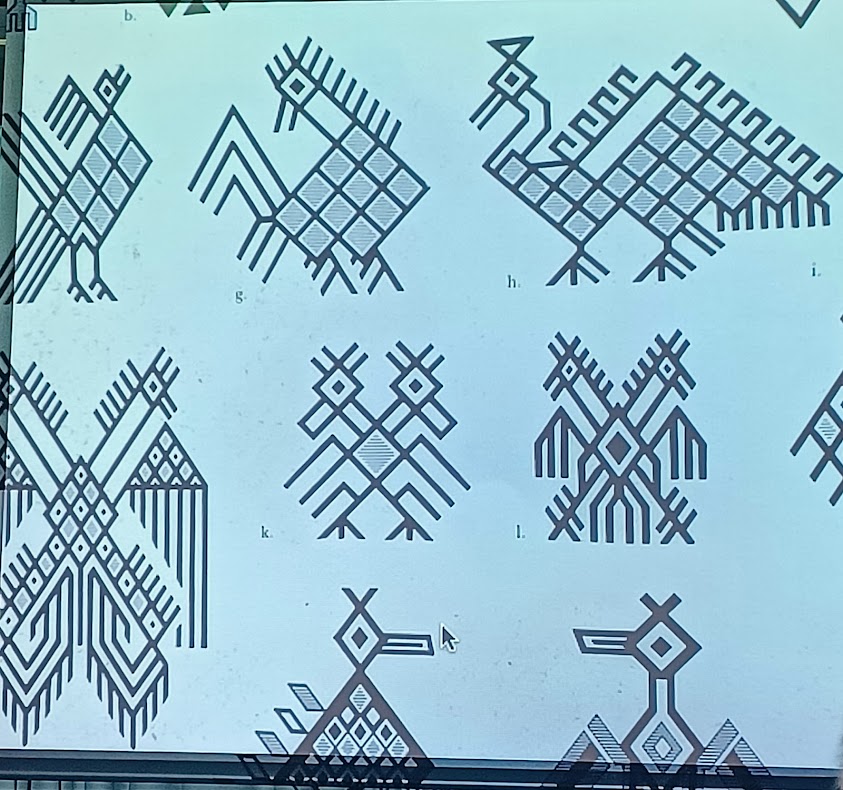
Nowadays the costumes are mixed with western dress and the men’s clothing tends to be more simple however traditional dress is still valued. Some villages even turn their costumes inside out for daily wear and turn it the right way round when they want to show off their best stitching and designs.
Thank you Jill for opening our eyes to such an interesting part of the world and for sharing your wonderful collection of garments and allowing us to touch them.
Report and photos by Ros
Some images thanks to Jill’s presentation
Further research:
https://tramatextiles.org/pages/maya-textiles
https://www.spurlock.illinois.edu/collections/notable-collections/profiles/guatemala-textiles.html

